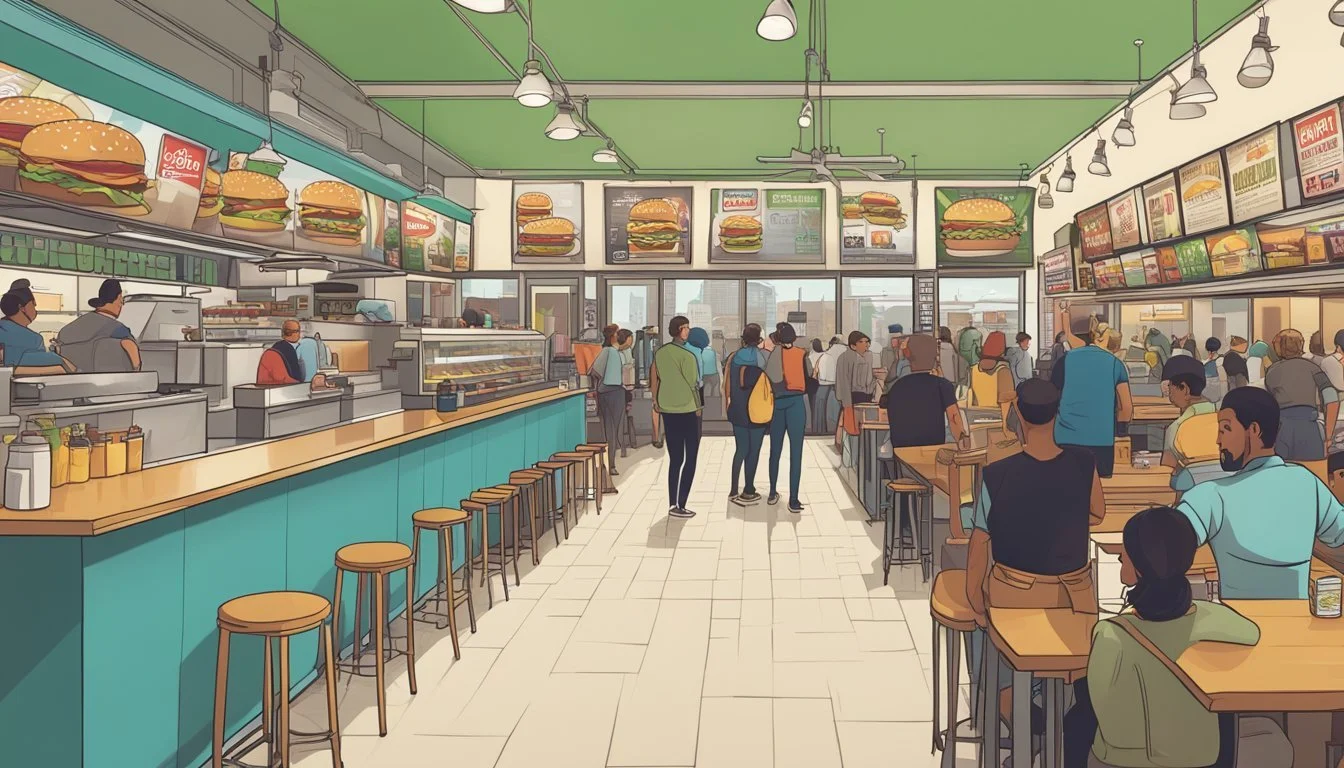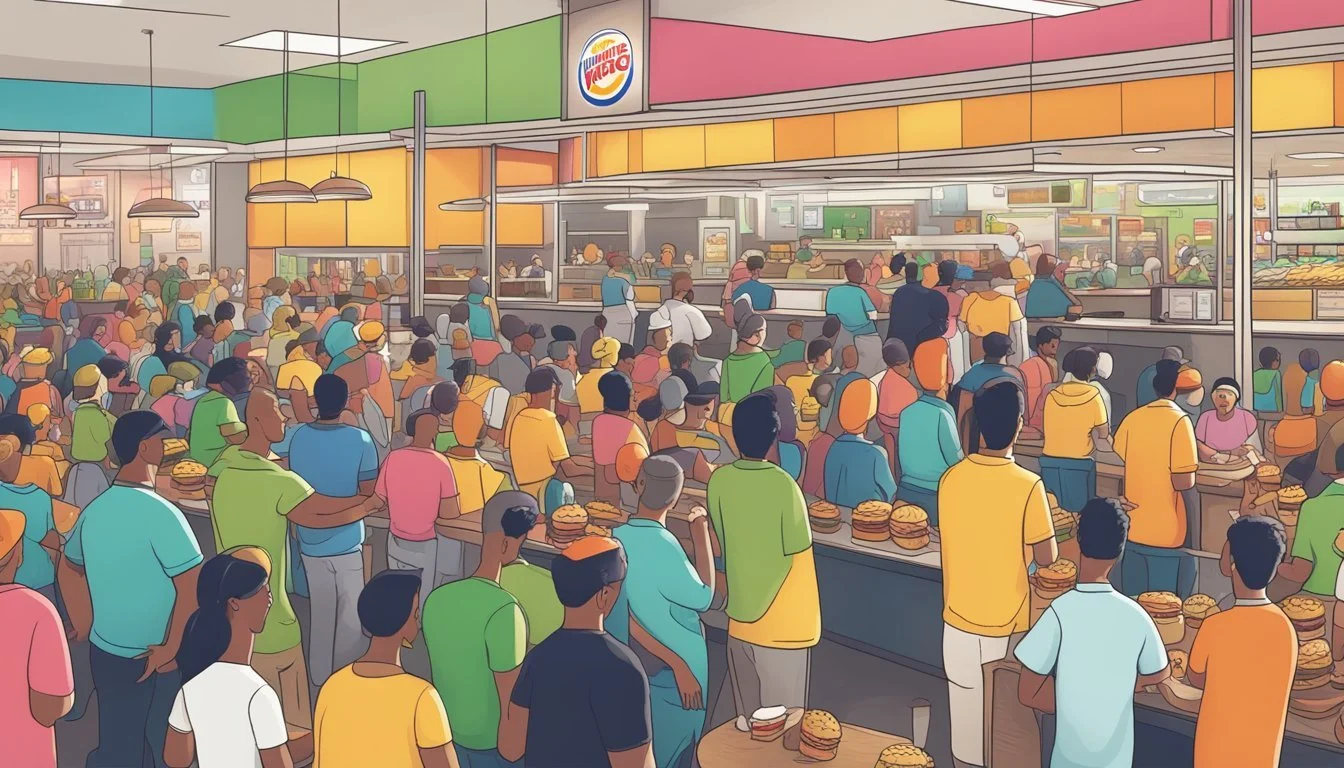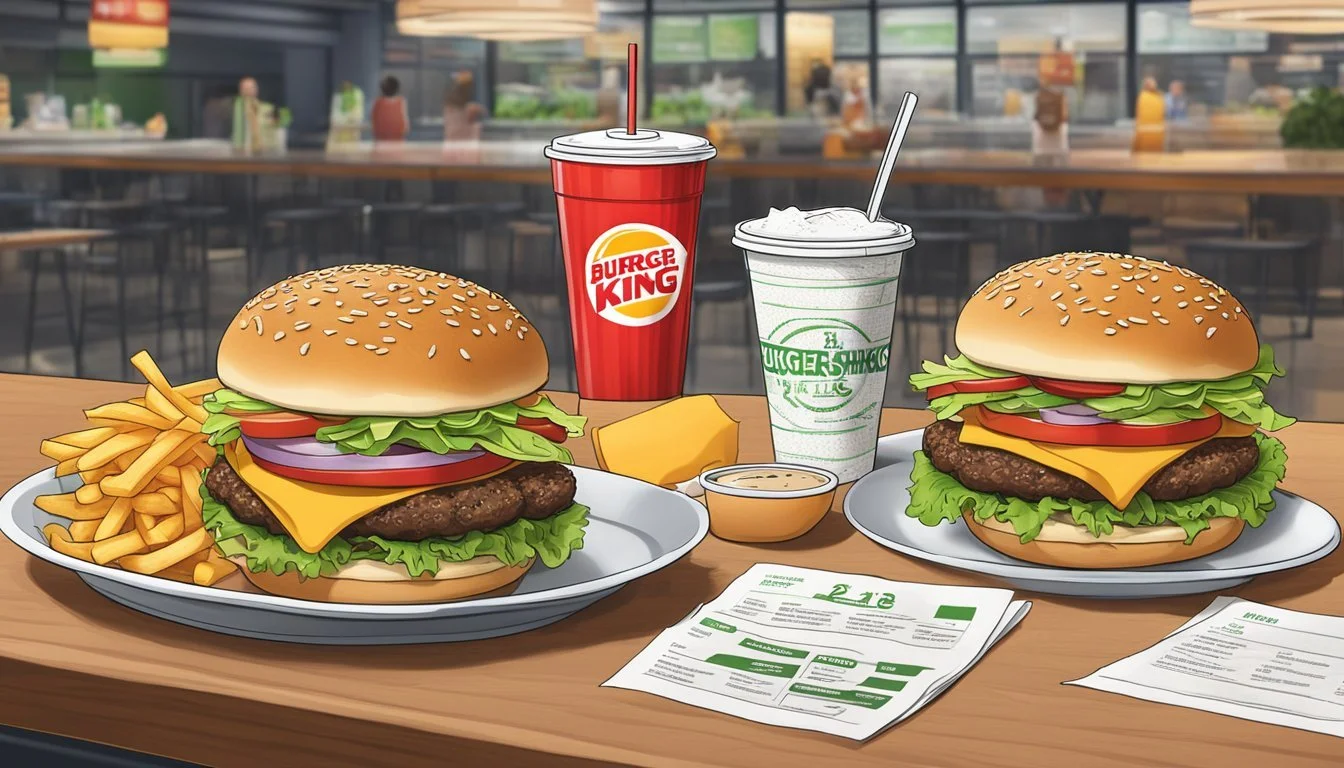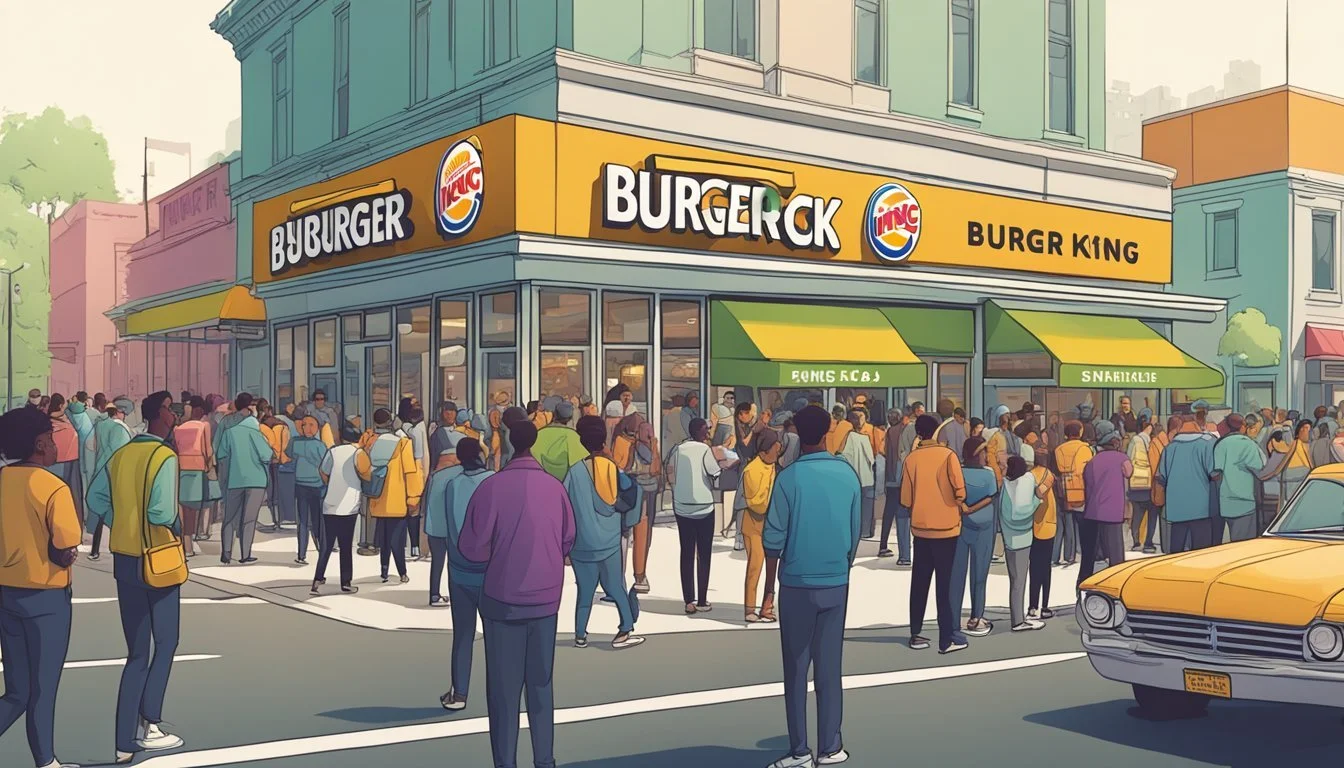Burger King vs Shake Shack
A Comprehensive Comparison of Fast-Food Giants
When comparing Burger King and Shake Shack, consumers are looking at two very different experiences within the fast-food landscape. Burger King has been a longstanding name since it was founded in 1953, delivering quick-serve, flame-grilled burgers at a wallet-friendly price. With a global presence and a reputation for speedy service, it appeals to those looking for traditional fast-food fare. Its Whopper, infamous for its size and customizable toppings, remains a staple for the chain.
On the other side, Shake Shack entered the scene from humble beginnings in a New York City park in 2001, differentiating itself by focusing on quality ingredients with an ethos of "fine casual." Unlike Burger King, Shake Shack uses 100% all-natural Angus beef free from hormones and antibiotics, offering a more gourmet take on the burger experience. The brand prides itself on not only burgers but also a selection of hot dogs, shakes, and frozen custard, which suggests an updated twist to classic American fast food.
Evaluating which burger joint is better isn't just a taste test; it extends to considerations of dining ambiance, service quality, menu variety, and value for money. Consumers' choices often reflect their priorities, whether that's a traditional, quick meal on-the-go or a higher-quality burger that might require a slightly longer wait and a few more dollars. Each brand has cultivated a dedicated customer base, with Burger King appealing to those seeking familiarity and convenience, and Shake Shack attracting a following for its premium ingredients and modern dining experience.
Historical Development
In the competitive landscape of American fast-food, both Burger King and Shake Shack have carved out significant histories. Their individual evolution from single storefronts to international presences marks a journey of strategic growth and adaptation to consumer tastes.
The Rise of Burger King
Burger King originated in 1954 in Miami, Florida, and was initially named "Insta-Burger King." Founders James McLamore and David Edgerton established the chain with the idea of selling quality, flame-grilled burgers quickly and efficiently. They introduced the iconic Whopper in 1957, which became a hallmark of their menu. The success of this item helped propel the franchise's expansion, with Burger King becoming a recognizable name across the United States. By the late 1960s, the chain had become the second-largest burger chain in the country and started its journey toward international expansion.
The Growth of Shake Shack
Shake Shack began quite differently, as a hot dog cart in Madison Square Park, New York City, in 2001. It was conceived by restaurateur Danny Meyer as part of an art installation to support the Madison Square Park Conservancy's first art installation. The cart's success led to the opening of a permanent kiosk in the park in 2004. Shake Shack's focus on premium ingredients, including 100% all-natural Angus beef, and an innovative modern-day "roadside" burger stand concept fueled its growth. The brand's dedication to quality food and the overall customer experience catalyzed its expansion, both nationally and internationally.
Menu Offerings
When weighing Burger King against Shake Shack, a comparison of their menu offerings reveals distinct choices and specialties that cater to diverse taste preferences.
Burger King's Menu Diversity
Burger King's menu is known for its wide variety of options. They offer a range of burgers, including the legendary Whopper, which is a flame-grilled beef patty with tomatoes, lettuce, mayonnaise, ketchup, pickles, and onions on a sesame seed bun. Aside from traditional cheeseburgers and hamburgers, they also offer chicken sandwiches, salads, and breakfast items. Patrons can enjoy side items like fries and onion rings, and for dessert, Burger King serves soft-serve ice cream and pies.
Burgers/cheeseburgers: A selection including the Whopper, Bacon King, and more
Chicken options: Crispy chicken sandwiches, nuggets
Vegetarian: Veggie burgers
Sides: Fries, onion rings, mozzarella sticks
Desserts: Ice cream, pies
Beverages: Sodas, iced teas, milkshakes
Shake Shack's Signature Items
Shake Shack has gained a reputation for its ShackBurger, a cheeseburger topped with lettuce, tomato, and ShackSauce on a non-GMO Martin's Potato Roll. Their menu is more focused on quality than variety, specializing in antibiotic-free beef burgers. In addition to the ShackBurger, the 'Shroom Burger offers a vegetarian option with a crisp-fried portobello mushroom filled with melted cheeses. They also serve chicken sandwiches, flat-top hot dogs, and a selection of fries. Their famous milkshakes are made with real sugar and no high-fructose corn syrup.
Burgers: ShackBurger, 'Shroom Burger, SmokeShack
Chicken: Chicken Shack, Chick’n Bites
Hot dogs: Shack-cago Dog, Hot Dog
Sides: Fries (cheese fries option available)
Desserts: Frozen custards, concretes
Beverages: Lemonade, beer, wine, milkshakes
Quality and Taste
When it comes to comparing Burger King and Shake Shack, the discourse around quality and taste centers on how each brand sources its ingredients and the end result these elements create in their signature burgers.
Burger King's Flavors and Ingredients
Burger King has long been known for its signature flame-grilled flavor, which imparts a distinct taste profile to its offerings. Their patties are typically made from ground beef that presents a juicy and tender bite, albeit fast-food standard. The tomatoes and lettuce bring in a fresh crunch, but in terms of quality, they fluctuate with season and supplier. The cheese is typically a melted slice of American cheese, which complements the smoky taste of the meat.
Beef: Flame-grilled for a smoky taste.
Sauce: House sauces that range from tangy to smoky.
Toppings: A standard array that includes lettuce, tomato, raw and grilled onions, and pickles.
Cheese: Consistent, melted American cheese adds a creamy texture.
Shake Shack's Commitment to Quality
Shake Shack, on the other hand, positions itself as a provider of premium fast-casual burgers. They use 100% all-natural Angus beef known for being both flavorful and hormone and antibiotic-free. In terms of the patty, they offer a semi-smash technique that caramelizes the exterior for an extra flavor element. Shake Shack's pride in using fresh, high-quality toppings like green leaf lettuce, tomato, and crinkle-cut pickles significantly boosts the overall taste experience.
Beef: 100% all-natural Angus, hormone and antibiotic-free.
Sauce: Unique ShackSauce, adding a tangy kick to the burger.
Toppings: Fresh lettuce, tomato, and crinkle-cut pickles, known for their consistency and quality.
Cheese: Premium, melted cheese that enriches the burger's flavor.
The contrasting approaches of the two establishments are evident in the quality and taste of their food. Burger King's flame-grilled technique introduces a traditional, charred taste, while Shake Shack's meticulous ingredient curation and preparation techniques aim to deliver a higher-end, nuanced flavor profile.
Customer Experience
When comparing Burger King to Shake Shack, customers will notice differences in service speed and satisfaction, and the distinct atmospheres that each brand promotes, which contributes to their overall experience.
Service Speed and Satisfaction
Burger King, with its traditional fast food model, typically offers quicker service due to its emphasis on speed and convenience. Customers at Burger King can expect a standardized process that is optimized for delivering food quickly, usually within minutes of ordering, even during peak times. Drive-thrus and digital ordering further reduce wait times.
Shake Shack, on the other hand, takes a slightly different approach to service. Known for its commitment to quality, customers might experience a slightly longer wait time compared to Burger King. However, they also tend to report higher satisfaction with the quality of their meals, suggesting that the wait can be worthwhile for a premium fast-casual experience.
Atmosphere and Brand Image
In terms of atmosphere, Burger King tends to have a uniform and functional space that aligns with its image as a fast food giant geared towards quick visits and convenience. The design and ambience are familiar but may lack the uniqueness or local flair.
Shake Shack has cultivated a distinct brand image that resonates with an upscale fast-casual dining experience. Their locations often feature modern and trendy designs, including outdoor seating and environmentally conscious elements. This aligns with their brand ethos of community-building and sustainability, making the atmosphere a significant part of the Shake Shack experience.
Nutrition and Ingredients
When comparing the nutritional content and ingredients of Burger King and Shake Shack, one must consider the caloric values, health implications, and the use of hormones and antibiotics in the protein sources.
Health Considerations at Burger King
Burger King's menu offers a variety of items with a wide range of calorie counts. A standard Whopper, for instance, contains about 657 calories, while options like salads can offer lower calorie meals. Burger King has removed artificial preservatives, colors, and flavors from certain items as part of an initiative to provide healthier options. However, like many fast-food chains, the restaurant's menu is often high in sodium and saturated fats, which can be a concern for those monitoring their dietary intake for health reasons. The use of hormones and antibiotics in Burger King's meat supply has been reduced over the years, reflecting a shift in consumer demand for more natural ingredients.
Shake Shack's Nutritional Values
Shake Shack takes pride in its use of all-natural Angus beef that is free from hormones and antibiotics. The focus on quality ingredients extends to the Veggie Shack, which when ordered as a vegan lettuce wrap contains 310 calories, 18g fat, and 900mg sodium. These figures represent a healthier alternative within the fast-food space, although they are still significant when considering daily nutritional guidelines. Shake Shack's commitment to premium ingredients comes with a typically higher calorie count compared to some fast-food options, but it also suggests a consideration for the health-conscious consumer.
In summary, both Burger King and Shake Shack make efforts to cater to health-conscious diners with varied menu options and attention to ingredients' quality.
Pricing and Value
When evaluating Burger King and Shake Shack, consumers often consider the balance between cost and the quality they receive. This section explores these factors in a direct comparison.
Cost Comparison
Burger King prides itself on affordability, often offering meals and deals that cater to a budget-conscious audience. Customers typically spend around $3-$5 for a signature Whopper burger. The value comes from competitive pricing while maintaining a consistent taste profile across its numerous global locations.
Shake Shack, in contrast, positions itself in the 'fast-casual' sector, marked by a higher price point reflecting its commitment to premium ingredients. Prices for a Shackburger start at about $5.29, which does not include additional items like fries or shakes. The customer at Shake Shack is not paying solely for the meal but also the experience and promise of higher-caliber ingredients.
Burger Joint Signature Burger Price Value Proposition Burger King Whopper $3 - $5 Affordability and consistency Shake Shack Shackburger Starts at $5.29 Quality ingredients and experience
It is evident that the two chains serve different market segments: Burger King targets cost-sensitive consumers while Shake Shack appeals to those willing to pay a premium for perceived quality enhancements.
Location and Accessibility
When comparing Burger King to Shake Shack, one must consider their distinct footprints. Burger King's extensive global presence contrasts with Shake Shack's more exclusive expansion strategy that focuses on specific markets.
Burger King's Global Reach
Burger King, with its inception dating back to 1954, has established a massive global network. As of now, the company operates in over 100 countries, with thousands of locations worldwide. Burger King has a significant presence on both coasts of the United States, from New York to California, cementing its position as a food industry giant. Its accessibility is bolstered by the sheer number of outlets, making it one of the most recognizable fast-food chains globally.
East Coast: Strong presence with numerous locations
West Coast: Well-established with locations in key cities and suburbs
Shake Shack's Expansion
Shake Shack began as a hot dog cart in New York City in 2001, and has since expanded with a focus on quality and locality. With a more selective strategy, Shake Shack has placed its core locations predominantly on the East Coast, especially in New York. However, its footprint has grown to include key locations on the West Coast, particularly in California. Shake Shack’s growth strategy appears to be carefully managed, focusing on strategic, high-foot-traffic venues. The brand tends not to open as many outlets as Burger King but chooses its locations with a discerning eye.
New York: Dense concentration with flagship locations
California and West Coast: Expanding presence with emphasis on popular urban areas
Brand Loyalty and Marketing
When examining Burger King and Shake Shack, their approaches to marketing strategies significantly influence brand loyalty. Both chains actively deploy promotions and advertising campaigns that resonate with their customer bases, fostering a devoted following.
Marketing Strategies
Burger King adopts a provocative and often irreverent marketing approach. It engages customers through:
Social Media Campaigns: Utilizing bold and sometimes controversial ads to stir conversation.
Partnerships: Collaborating with pop-culture icons and brands for limited-edition meals or incentives.
Shake Shack, on the other hand, positions itself around the experience of a modern, roadside burger stand:
Quality Focus: Leveraging high-end ingredients in its messaging to highlight the premium nature of its products.
Community Engagement: Hosting local events and participating in community projects to build local brand loyalty.
Cultivating Brand Advocates
Both Burger King and Shake Shack have strategies to turn customers into brand advocates.
Burger King:
Loyalty Programs: Implementing rewards systems like mobile app points to encourage repeat visits.
Interactive Campaigns: Engaging customers directly through interactive channels like Twitter.
Shake Shack:
Quality Service: Emphasizes customer service to generate positive word-of-mouth.
Sustainability Practices: Promotes environmentally-friendly practices, appealing to eco-conscious consumers.
Through these specific marketing efforts, Burger King and Shake Shack tailor their brands to different consumer segments, each fostering brand loyalty in their unique ways.
Social Responsibility and Ethics
Shake Shack has made notable strides in corporate social responsibility, with initiatives aimed at supporting communities and diverse causes. In 2021 alone, it raised nearly $250,000 for various organizations including 1% for the Planet and Fresh Air Fund. The company also emphasizes ethical sourcing and has experimented with alternative, more sustainable protein sources to lessen its environmental impact.
In comparison, Burger King has focused its corporate social responsibility efforts through programs intended to align with stakeholders' interests. Burger King's commitment to these programs is part of its strategy to expand its market share, with initiatives that include:
Prioritizing customer interests.
Addressing environmental concerns.
Ethical treatment of employees.
Both companies are active in their corporate responsibility, although their approaches and areas of emphasis may differ. Shake Shack's support for environmental and social causes is evident in its fundraising and menu diversification. Burger King's efforts to grow in the foodservice market are underpinned by a set of CSR policies designed to appeal to a broad base of stakeholders.
In terms of sustainability, Shake Shack has shown a propensity for innovation in the menu, offering options like the 'Shroom Burger, which caters to an audience looking for vegetarian alternatives. Burger King has also introduced plant-based alternatives, such as the Impossible Whopper, acknowledging the ecological footprint of traditional beef products.
Ethical sourcing remains a critical concern for both chains as consumers become increasingly conscious of where their food comes from and the ethical implications tied to sourcing practices. Each brand's commitment to ethical practices is reflective of broader industry trends that prioritize not only profit but also people and the planet.









